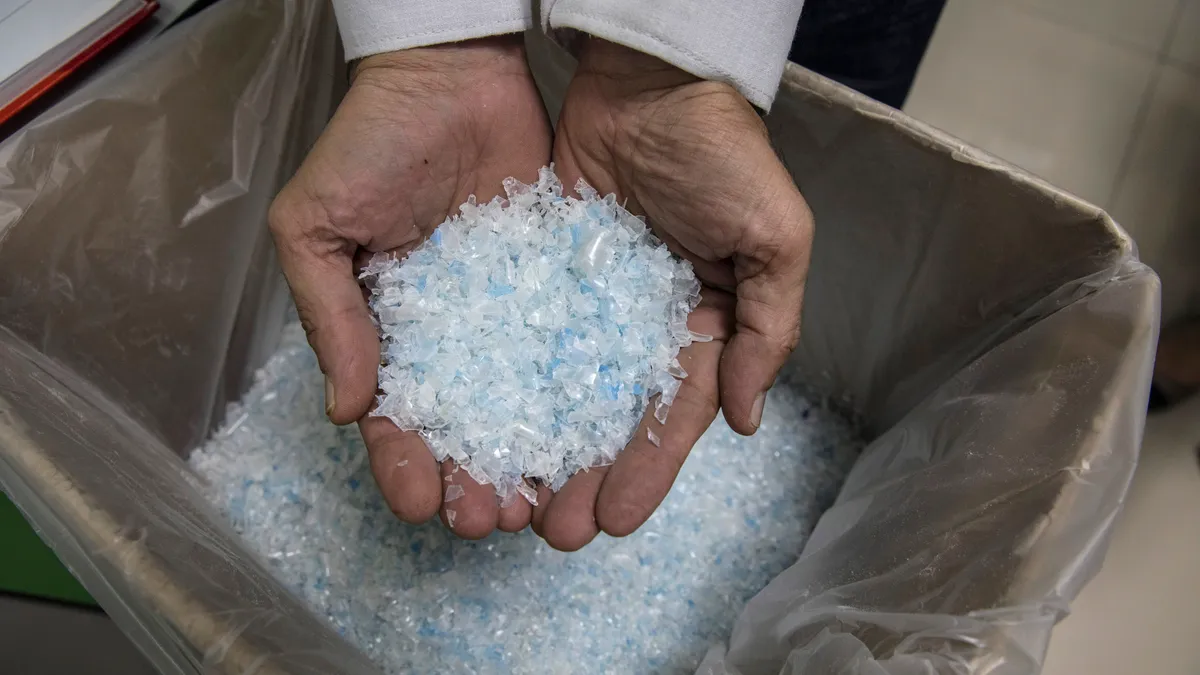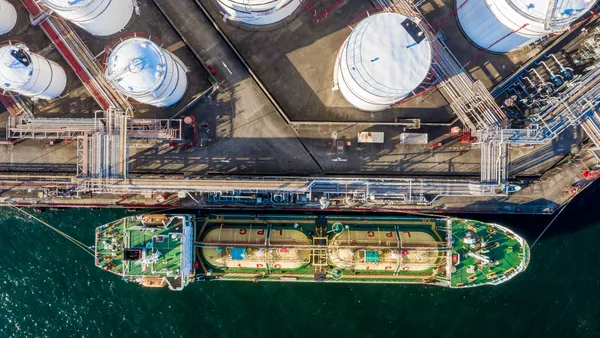Multiple companies along the resin supply chain are adjusting their inventory strategies and production outlooks due to a tight and pricey market.
Resins — key building blocks of a variety of plastic products — have been in short supply since a rare southern ice storm knocked out a significant chunk of U.S. production capacity and drove prices up 30% to 50%.
Resins are a byproduct of petroleum refining whose production capacity is concentrated along the U.S. Gulf Coast, a region that's no stranger to disruptions from catastrophic weather. Ahead of Hurricane Ida, which made landfall in Louisiana in late August, plastics manufacturers still reeling from February's winter storm had been stockpiling key resins to compensate for volatility in supply and pricing.
Resin prices surged
The market has plateaued a little bit, at least for now. But manufacturers continue to report higher prices and short supplies of resin-related products, according to the Institute for Supply Management's October Manufacturing Report on Business.
"Current inventories are at record levels, so we're seeing supply and demand balancing out," said Sudeep Suman, a director at the consulting firm AlixPartners. "Preparing for it softened the effect."
Still, volatility is increasingly the norm in the resin market. An ongoing pandemic continues to drive up demand for drinking straws, plastic containers, face shields, medical supplies and more. Stockpiling and preparation can only do so much.
Challenges in the resin supply chain
Water bottlers face a double whammy when it comes to key resins like Polyethylene Terephthalate, also known as PET. The clear, lightweight plastic is commonly used in food and beverage packaging.
The material became more expensive after a tax on imported resins was reinstated last year.
Duties on PET from China are now set at $1.80 for each $1 of imported goods, said Joe Doss, president and CEO of the International Bottled Water Association. And they're not just more expensive but also harder to get.
"Our members have products sitting on boats," Doss said.
Water bottlers have been responding to PET pricing volatility by trying to use less of it, a practice that’s leading to lighter water bottles. Still, they’re seeing prices from domestic producers increase and are having to contend with partial deliveries, Doss said.
Resin is also a common material in paint, used to bind particles to one another and to the surface painted. As winter and tropical storms disrupted production, Sherwin-Williams lowered its sales and earnings expectations for the year in late September, citing the effects of Hurricane Ida.
"Our suppliers are now reporting that the impacts of Hurricane Ida are more severe and will be longer lasting than initially thought. Production of several key resins, additives and solvents, expected to resume by late September, has been pushed out," the company's CEO John G. Morikis said in a press release.
The company said it would purchase a specialty polymers manufacturer to bolster its internal resin manufacturing capacity.
"We see the opportunity to add millions of pounds of additional capacity to its footprint in the near term with relatively minimal investment," Morikis said.
A 'breath of fresh air' for resin buyers
The automotive industry is among the largest users of resins. A shortage of semiconductors that has slowed down automotive production lines provided some relief that Suman said could lead to downward pressure on resin prices.
"It could be a little breath of fresh air for resin users," he said.
And other bits of welcome news are emerging for businesses reliant on resins. Commodity grade resin supply availability has improved, and spot prices for polyethylene and polypropylene — two of the most commonly used resins — have slowly been declining, according to The Plastics Exchange, a marketplace for buying and selling commodity grade resins.
"We're seeing supply and demand balancing out."

Sudeep Suman
Director at AlixPartners
Polyethylene plants knocked offline in Texas — home to 85% of U.S. polyethylene production — after Hurricane Nicholas made landfall in September are coming back online. Meanwhile, facilities whose production schedules were significantly disrupted by Hurricane Ida's landfall in Louisiana in late August also are seeing their production capacity return.
But hurricanes continue to pose a threat to manufacturers largely based along the Gulf Coast in Texas and Louisiana. And even when hurricane season passes, winter brings the threat of more storms.
Suman expects resin supplies to remain tight through the winter and into 2022.
"We're not out of the woods yet," Suman said. "Winter is coming."
This story was first published in our Procurement Weekly newsletter. Sign up here.












